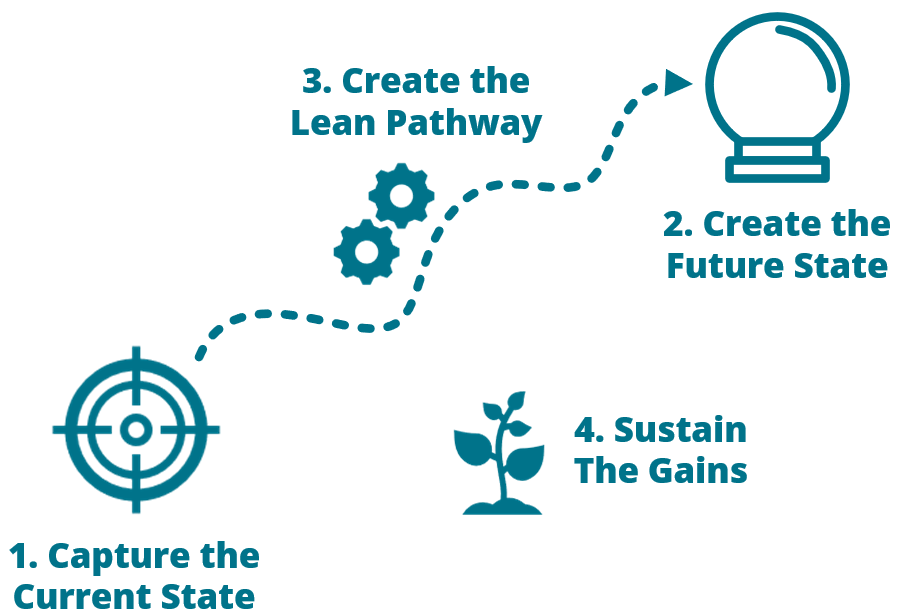2020 – what a year. No one saw that coming. An unprecedented economic downturn resulting from a global pandemic that had us all stay home to protect ourselves and others. Businesses, and specifically manufacturing operations, dealt with lost revenue and decreased sales, while trying to maintain the health and safety of their employees, pivot to new markets and try to keep the lights on.
In the initial survival phase of COVID-19, businesses cut costs, reduced staff and some even pivoted to manufacture new products including hand sanitizer, ventilators and PPE.
Breweries made hand sanitizer instead of beer, Formula 1 teams collaborated to build ventilators instead of race cars, and manufacturers focused production on their highest margin, highest demand products. All manufacturing companies looked for ways to cut costs in an uncertain environment. Staff were laid off and furloughed, capital projects were deferred, and companies took advantage of emergency support government funding. And all of that happened in just March.
As the months of 2020 wore on, manufacturing companies went after and realized their low hanging fruit cost savings opportunities. Some amount of stability was felt as the sales of new products began, and familiar product sales returned to some level. A few especially agile manufacturing companies seized the opportunity of the pandemic and took on new projects and new business ventures. We got used to life with COVID-19. Social distancing, facemasks and limited social gatherings became part of life.
As the calendar turns to 2021, there is a sense of optimism with the arrival of the COVID-19 vaccines. However, COVID-19 didn’t magically disappear on New Year’s day. What we have now is a light at the end of long dark tunnel – an empowering future to live into. Many manufacturing operations have figured out how to survive the pandemic (a massive accomplishment), and now turn their focus to thriving in the face of the pandemic and the day that COVID-19 is a thing of the past.
But there’s a problem. Once you’ve achieved all the low hanging fruit improvement opportunities, the next levels of improvements are harder to identify and realize, particularly for manufacturing operations with low product margins and minimum staff. Enter Lean Six Sigma – your ticket to thriving in a post-pandemic economy is to cause a lean transformation of your business operations, now.
Causing a Lean Transformation of your business is a four step process, outlined below. In step one, the Current State of the process is established, including process performance metrics such as production rate, quality metrics and cycle time. Next a Future State is declared, creating a compelling future that will make a positive impact on your business. Creating a Future State that you don’t immediately know how to fulfill is critical to creating the opportunity for breakthrough business results.

Next, use the Lean Six Sigma tools including Process Mapping, Root Cause Analysis, 8 Wastes and Workload Balancing to create the Lean Pathway to achieve the Future State.
The final step for causing a Lean Transformation is Process Sustainment. This is the most critical stage and ensures that the gains and improvements achieved during the transformation are sustained over time. Effective process sustainment systems and structures including Standard Work and Visual Management are developed to ensure that the improvements are monitored and continue to work well over time.
My Clients have achieved the following outcomes using this Lean Transformation model:
- Reduced equipment downtime for a fertilizer manufacturing company by 48%, generating an extra month worth of production, valued at $11M
- Expanded capacity in a hospital outpatient unit by 25% without adding resources, created the opportunity to care for 500 more patients per year
- Reduced process changeover time by 55% from 3 hours to 100 minutes, saving 53 hours per year and over $17,000 in operating costs
- Streamlined process operations for a technology company by 40%, enabled their expansion into a new market
Manufacturing organizations that commit to causing a lean transformation of their business typically achieve cost savings in the realm of 15% to 40% or higher, save significant amounts of processing time and enjoy the benefits of a safer work process and a positive shift in their workplace culture. If you want to explore what it looks like to have your manufacturing operations set up for success in a post-pandemic economy, reach out to me at holly.blair@engineeringpossibilities.ca and let’s have a conversation! You can also visit my website for more information and free lean resources at www.engineeringpossibilities.ca. My lean training programs, LEGO simulations, consulting and coaching services are here to empower your success!


Recent Comments